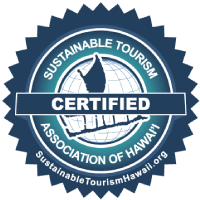Big Island Top 10 Things To Do
/Big Island Top 10 Things To Do
The Big Island of Hawai’i is a special place. Rich natural and cultural treasures have formed the identity of the newest of the islands within the Hawaiian archipelago. The Big Island hosts a wide range of diverse ecosystems, due in part to its unique topography. There are the Mauna Kea and Mauna Loa volcanoes in its center reaching towards the heavens, lush rainforests on the east side around Hilo, and sandy beaches and sheltered bays on the west side around Kailua-Kona. Each area boasts unique opportunities for exploration and enjoyment for every type of traveler. Let’s explore the highlights of the best things to do on the Big Island!
1. Visit Mauna Kea Observatory
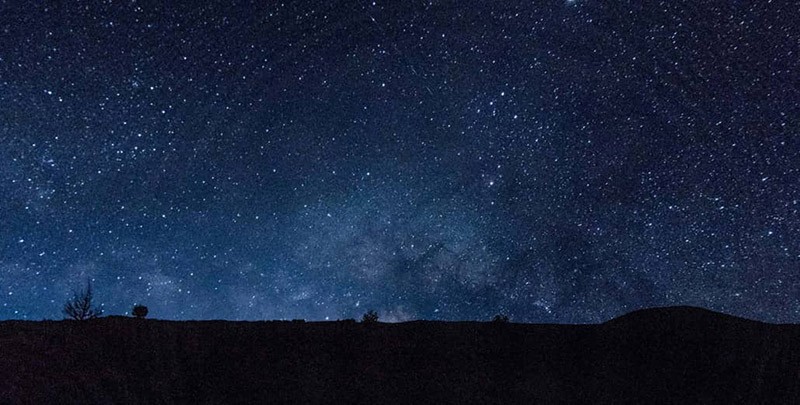
The Mauna Kea Observatory is set on the top of the mountain in which it derives its name, boasting one of the darkest skies on the planet and best places to view the night skies. It is now considered the world’s largest astronomical observatory, with the combined light-gathering of the telescopes atop Mauna Kea far surpassing that of the Palomar telescope in California and the Hubble Space Telescope! The summit of Mauna Kea is very dry and cloud-free, and there are lighting ordinances island-wide that protect the dark sky conditions that allow astronomers and visitors alike to peer into the depths of faraway galaxies in the night sky.
Mauna Kea is accessible via Saddle Road that traverses the middle of the island from Kailua-Kona in the west to Hilo in the east. When making the drive, whether on your own or part of a tour, make sure to stop at the Visitor Information Station at 9,200 ft (open 9AM-5PM). Here you can check road and weather conditions for the summit, learn about the natural and cultural history of Mauna Kea, and also get information on the telescopes and astronomical wonders being discovered at the top. This is also an excellent opportunity to give your body time to acclimate from the ascent from sea-level to this altitude. If continuing on to the summit, a 4-wheel drive vehicle is recommended for the dirt roads up. Do be aware that there is 40% less oxygen at the summit, as well as freezing temperatures, so please make sure you and your companions are prepared and healthy enough to visit!
Fun fact
Mauna Kea is actually the tallest mountain on the planet reaching over 32,000 feet from its base on the seafloor to its tip at 13,796 feet above sea-level. Mount Everest is only 29,029 feet tall!
Interesting fact
Native Hawaiians refer to this site as Mauna o Wakea, translating roughly to “sky father” or “mountain of Wakea”. Wakea was considered the father of Hawaiians and this sacred sight was the domain of the gods, kapu (forbidden), to all but the ali’i (royalty) who would make the long trek to the summit.
2. Snorkel with Manta Rays
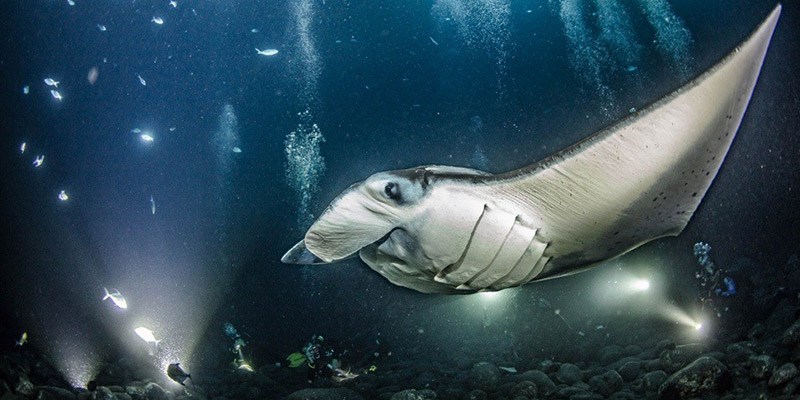
Manta rays frequent the waters off the coast of Kailua-Kona and are a huge draw for visitors to the Big Island of Hawai’i. Rightfully so, this may be one of the most incredible natural encounters of your life! Floodlights are positioned to attract plankton into the coastal waters off of Kona, where snorkelers and divers can observe the manta rays in a feeding frenzy! It’s truly a sight to behold.
There are two main sites that manta ray night snorkel excursions take you to: “Manta Village” and “Manta Heaven.” Departing from Keauhou Bay around sunset, Fair Wind offers great cruises with refreshments and experienced guides, all aboard sustainable vessels powered by photovoltaic electronics and biofuels. See more information about manta ray excursions here!
Fun fact
Manta alfredi, the species found in Hawaiian waters, have wingspans that can reach up to 18 feet!
Interesting fact
Manta rays are filter feeders and make giant sweeping circles with a flap of their wings to sieve plankton into their huge mouths.
3. Visit Hawaii Volcanoes National Park
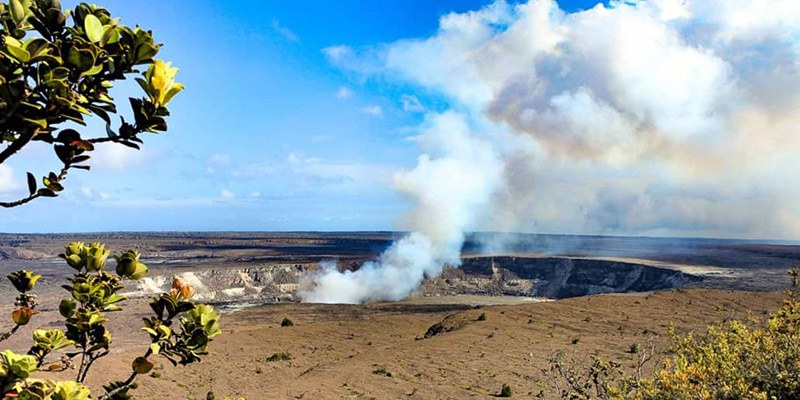
Naturally, when thinking of the Big Island of Hawai’i, active volcanoes may come to mind! Kilauea is one of the most active volcanoes on Earth and has been erupting since 1983. Recently, having captured the attention of the world, torrents of lava have been flowing out of Kilauea into the sea on the southeastern side of the island. Homes and entire neighborhoods have been lost in the path of Pele, the Hawaiian goddess of creation and fire, who is credited with creating the Hawaiian islands from volcanoes that erupted out of the seafloor.
Hawaii Volcanoes National Park covers about 333,308 acres that stretches from the summit of Mauna Loa to the sea. There are lots of hiking trails around and through the volcanic craters, lava scorched forests, and volcanic cliffs that border the sea. The park has a museum explaining the natural history of the islands, Mauna Loa and Kilauea volcanoes and the plants and animals within the borders of the park. This area has been deemed a UNESCO World Heritage Site containing an incredible amount of biodiversity for visitors to explore. Do bring a jacket, as this area can get cold due to the high altitude.
Sites of Interest
Crater Rim Drive: This 10.6-mile drive circles around the Kilauea caldera that features the Kilauea overlook, Devastation Trail, and Kilauea Iki Crater overlook. Parts of this section are closed as of February 2019, so please check the current closures and advisories for the park.
Halemaumau Crater: This massive volcanic crater, considered the home of Pele, vents plumes of steam and has at times been filled with a lake of lava that has now dropped over 1,600 feet from collapsing in on itself during the 2018 eruption.
Chain of Craters Road: At the southern end of Crater Rim Drive, there is a turnoff that travels from the crater down to the sea over lava flows. Depending on the volcanic activity, this road is sometimes closed. Check with Hawai’i Volcanoes National Park for current conditions and availability.
Nahuku-Thurston Lava Tube: Check out this lava tube, essentially a subterranean cave, that formed as torrents of lava flowed, cooled on the surface, and eventually drained out as the lava flowed through. Walk inside and marvel at this natural process that shaped these islands.
Fun fact
In 2016, the lava-filled Kilauea crater formed a distinct “smiley face” and became a worldwide sensation!
Interesting fact
There is a weak spot in the oceanic plate below the Big Island that has created an avenue for magma from the Earth’s core to escape. As the plate has moved northwest over millions of years, the Hawaiian islands were formed one by one from this magma that broke through the ocean’s surface and solidified! The island chain now measures around 1,500 miles long.
4. Snorkel Kealakekua Bay
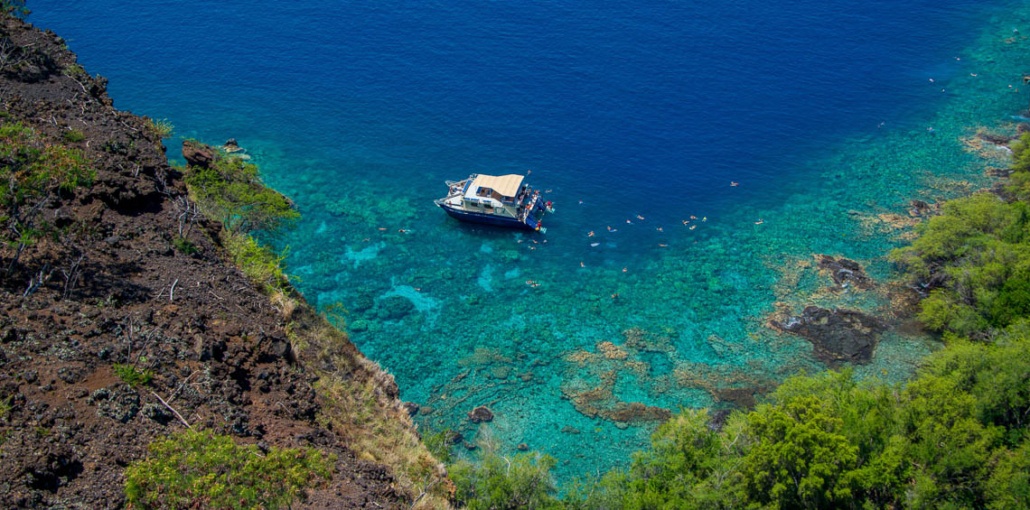
Kealakekua Bay houses one of the most pristine turquoise bays you may ever experience. Surrounded by 100-ft tall volcanic cliffs, the bay itself is sheltered from wave action, contributing to its incredible visibility of up to 100 feet! Popular with snorkelers, one can experience a wide diversity of marine life that lives off the vibrant reef within the bay. The bay is accessible by boat and can be a relatively private site to experience all sorts of wildlife including angelfish, lizard fish, colorful corals, butterflyfish, turtles, and the occasional marine mammal!
The Captain Cook Monument is also visible on the shore, erected by the British to honor Captain Cook in the place that he perished. Captain Cook was mistaken as the god Lono by Hawaiians upon his arrival, and during the makahiki festival, he was showered with gifts and adorations. When he and his crew returned to Kealakekua Bay after encountering storms shortly after leaving the island, the illusion of his godhood was broken as Hawaiians believed a god would have been able to avoid the storm. He later died in a battle onshore with four of his sailors on February 14, 1779.
Fun fact
Kealakekua is regarded as Hawaii’s top snorkel spot and has been protected as the Big Island’s only underwater state park!
Interesting fact
Kealakekua translates to “pathway of the god,” and here is where the makahiki festival was held to celebrate Lono, the god of fertility!
5. Waterfalls
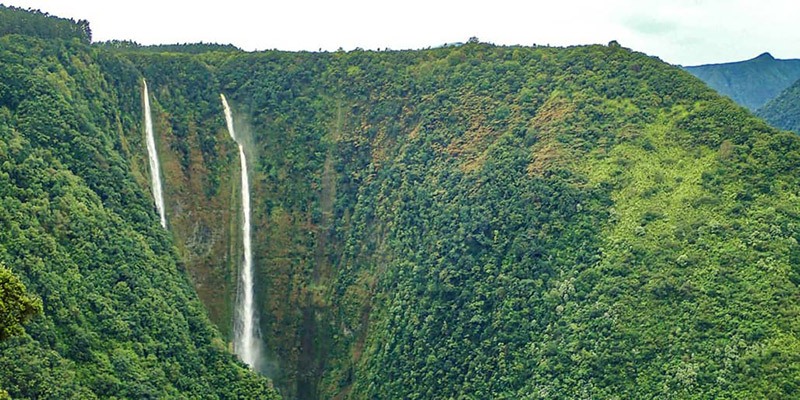
The eastern side of the Big Island is wet, receiving around 120-170 inches of rainfall annually. Here you will find lush tropical rainforests, massive waterfalls, and high ocean cliffs and valleys!
‘Akaka Falls State Park is located on the northeastern Hilo coast and offers a 0.4-mile hike that will take you through a lush rainforest featuring bamboo groves, huge ferns, and wild orchids. There are two waterfalls along this path: Kahuna Falls (100 ft tall) and the incredible ‘Akaka Falls that drop straight down 442 feet to the forest floor! It’s a delightful place to hike and marvel at the Big Island’s most popular waterfall.
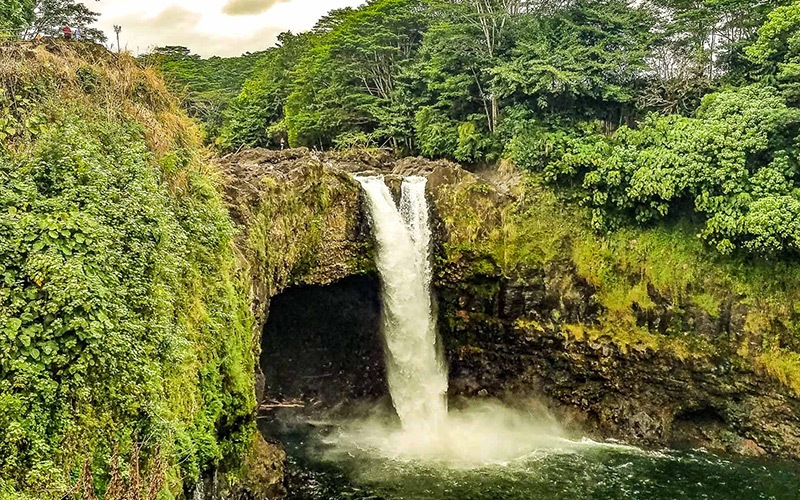
Located within Hilo, the 80 foot tall Rainbow Falls is absolutely stunning. They flow over the Wailuku River and commonly boast beautiful rainbows above the falls in the early morning! You can also continue along the left shoulder of the falls to get closer and gain an interesting vantage point.
Fun fact
The real name for this spot is Waianuenue, translating fittingly into “rainbow [seen in] water.”
6. Waipi’o Valley
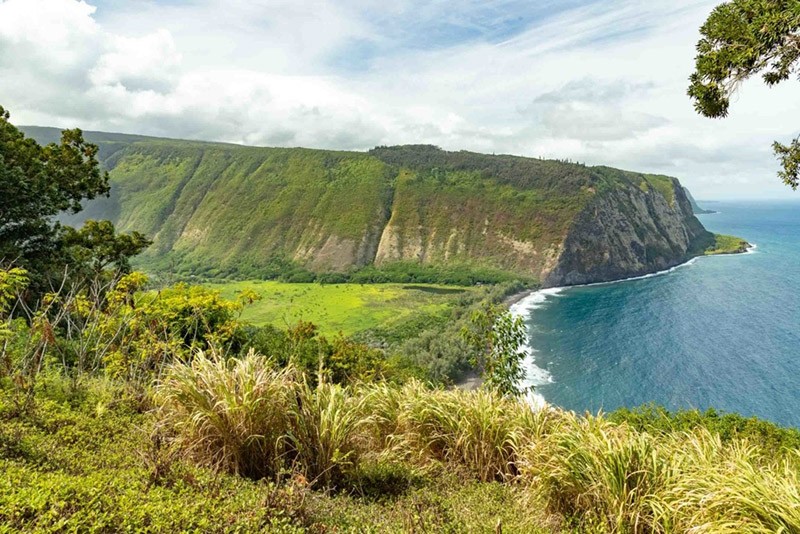
Waipi‘o Valley, located on the Big Island of Hawaii, is a place of stunning natural beauty and rich cultural history. Located near Honoka’a Town, Waipi‘o Valley was once home to some of Hawaii’s most powerful chiefs and their families. The valley is surrounded by cliffs over 1,000 feet tall, which provide breathtaking views of the lush green landscape below. Waterfalls cascade down these cliffs into the valley’s streams and rivers which flow through taro fields and ancient Hawaiian fishponds. With its dramatic landscapes and historical significance, Waipi‘o Valley has become an important destination for visitors to Hawaii as well as a treasured spot for locals who are looking to appreciate nature or reconnect with their ancestral past.
Unfortunately for tourists, Waipi‘o Valley Road is closed to non-residents. This means that visitors cannot access the valley floor or any of its subsequent valleys without being part of a tour. While this may be disappointing for those looking forward to exploring the area on their own, it does ensure that everyone visiting remains safe and respects the natural environment within Waipi‘o Valley. The Waipi’o Lookout is still open for viewing however, providing an incredible view from high above and allowing visitors to get a glimpse into this beautiful region.
Fun fact
Taro is grown all over the valley here where the staple crop of the Hawaiian culture is commonly pounded into poi
Interesting fact
When it rains really hard, you can sometimes view the incredible Kaluahine Falls that cascade from the cliffs directly into the ocean!
7. Taste World-Famous Kona Coffee
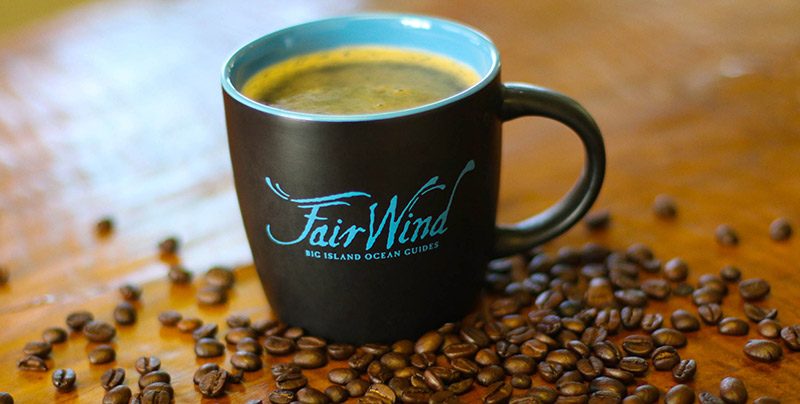
Kona coffee is world-renowned, grown in perfect conditions in Kona on the slopes of Mauna Loa and Hualalai. The environment around Kona creates an ideal recipe for growing this delicious coffee: light rain, mild winds, sunny skies, and mineral-rich volcanic soil. Many coffee plantations are run by families around Kona, some having continued the practice for generations! Here at Fair Wind Cruises we serve Kona coffee from our own farm during breakfast on our boats and is also sold in the gift shop.
You can take a farm tour at many of the local coffee plantations, such as Greenwell Farms, Mountain Thunder Coffee Plantation, Hula Daddy Coffee, and the Kona Coffee Living History Farm.
Fun fact
The Kona Coffee Cultural Festival is held every November in Kona.
Interesting fact
Coffee was brought to Kona in 1828 by Samuel Ruggles.
8. Experience A Green Sand Beach
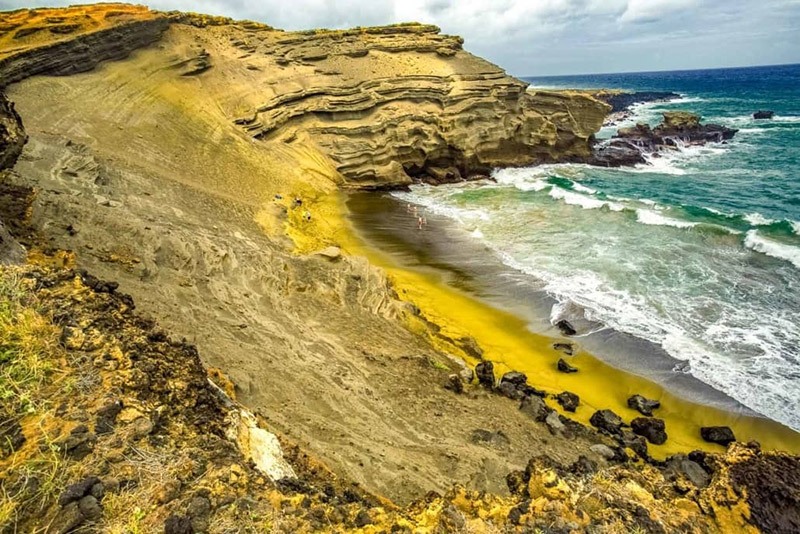
Papakolea Beach (Green Sand Beach)
Down at the very southernmost point of the Big Island is an incredible green sand beach! The beach was carved out of a 49,000-year-old cinder cone from the Mauna Loa volcano and given its distinctive color by the green crystals (olivines) that have been broken down into sand by wave action over the years.
Drive south from Kona to the southernmost tip of the Big Island and park your car in the designated lot at the end of South Point Road. A 2.5-mile hike over pasture land takes you along the coast to the beach. You will be fully exposed to the sun, so if you intend to do this go early in the morning and bring sun protection and plenty of water! Some local residents do offer a paid ride via 4X4 vehicle down to the beach, but this is illegal, and the vehicles damage the sensitive environment.
Do make sure to check out South Point (Ka Lae), where history says that Polynesians made their first landing in Hawai’i. The confluence of ocean currents make it a popular fishing spot, and the massive ocean cliffs are a fantastic place to watch a quintessential Hawaiian sunset.
Fun fact
Papakolea Beach is one of two green sand beaches in the United States.
Interesting fact
This is the southernmost point in the United States (outside of the U.S. territory: Palmyra atoll)
9. Kaumana Caves State Park
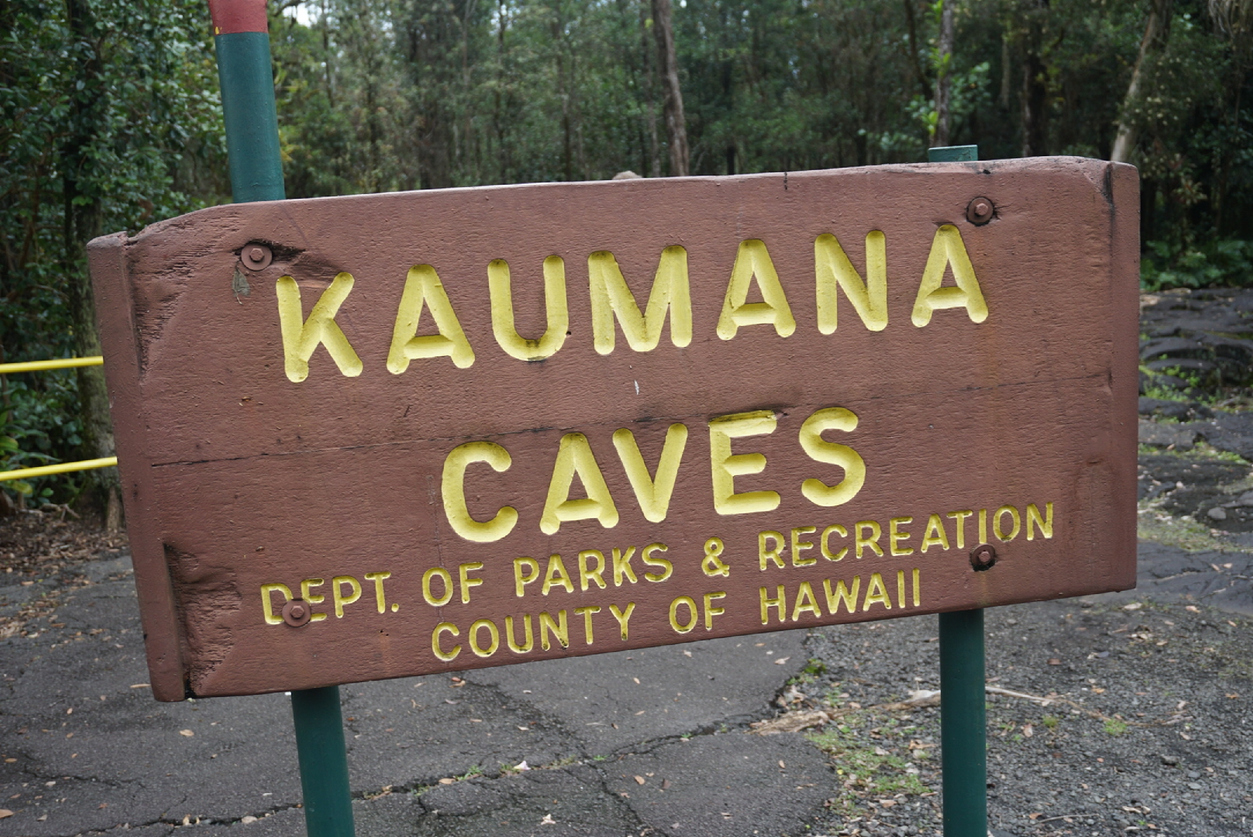
Kaumana Caves State Park offers the opportunity to climb down into and explore a lava tube. Walk inside and marvel at this natural process that shaped these islands. A quick drive from Hilo along Kaumana Drive, this cave is about a 0.5-mile walk from the parking area to a long lava tube that you can descend into via a metal ladder. Wear sturdy shoes and bring a flashlight so that you can peer into the tube.
Interesting fact
This lava tube was created from lava flowing out of Mauna Loa back in 1881.
10. Try Some Hawaiian Cuisine & Brews!
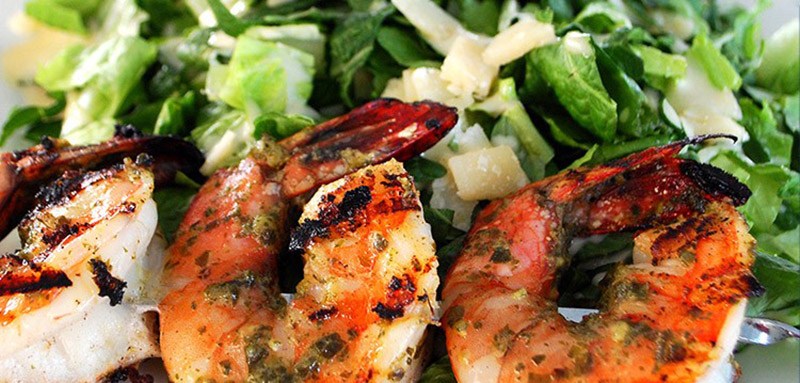
Poke
Ahi poke (pronounced “ah-hee poke-ay”) is a Hawaiian dish that is gaining popularity all over the United States and the world! You’ve got to try it in its original state: typically made from either aku (raw ahi tuna) or he’e (raw octopus). The fish is sliced raw and mixed in all sorts of combinations with limu (seaweed), sesame oil, shoyu (soy sauce), sea salt, inamona, and chili pepper. Commonly served over rice, poke bowls are a staple dish for residents in the Hawaiian islands. Some of our favorite places around Kona for poke are Umeke’s and Da Poke Shack.
Interesting fact
Poke means “to slice” in Hawaiian
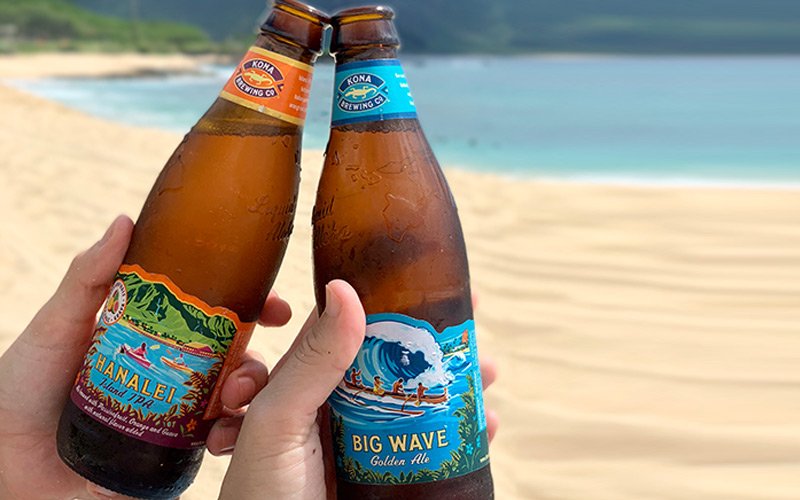
Craft Breweries
Hawaiian beer? You bet! The Big Island houses two incredible craft breweries that incorporate tropical and uniquely Hawaiian flavors into their beers!
Visit Kona Brewing Company near Kailua-Kona to take a brewery tour, eat tasty Hawaiian and American dishes, and try beers brewed with Kona coffee, passionfruit, and all sorts of other tropical fruits!
Another spot we love is Big Island Brewhaus, located in Waimea up towards the northern end of the island. The location is quaint, and it has a friendly local vibe to it. The beers are unique and delicious, so make sure to try a few in a flight!
A new brewery in town making waves already is Ola Brew Co, also located in Kailua-Kona. They source agricultural products locally to use in the brewing process to make delicious ciders and beers! Another spot we love is Big Island Brewhaus, located in Waimea up towards the northern end of the island. The location is quaint, and it has a friendly local vibe to it. The beers are unique and delicious, so make sure to try a few in a flight!
Fun fact
Brewers discovered a new type of hop, plucked from the soils of the volcano itself!

